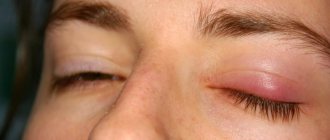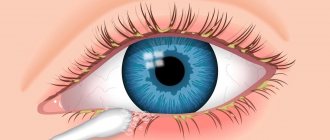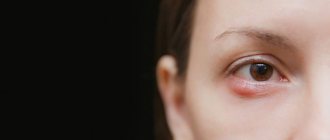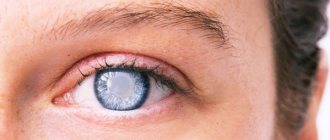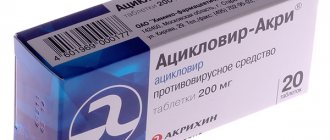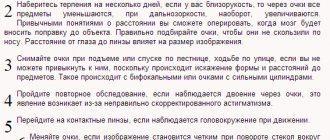Children, like adults, often face various eye diseases. Only sometimes it is not immediately possible to identify them quickly enough. Especially when it comes to a disease such as eyelid chalazions. Treatment for this pathology in a child may not begin immediately, since it is often confused with ordinary barley. The diseases are indeed similar, but the therapy will be different.
Chalazions of the eyelids. Treatment in a child
Causes
What is a chalazion in a child? This is a common ophthalmological disease in which the sebaceous (meibomian) glands of the eyelid become blocked. The meibomian glands produce a fatty secretion that provides lubrication to the edges of the eyelids and cornea. Thanks to this, when a person blinks, the eyelids do not rub against the eyeball. But if the lumen of the sebaceous gland becomes clogged, then this oily secretion accumulates inside it, which ultimately leads to the development of inflammation.
This inflammatory process is called chalazion. This disease is also popularly known as hailstones. The main reason for the occurrence of such a pathological process is a violation of the outflow of fatty secretions from the meibomian gland. The following factors can provoke the appearance of such a problem in childhood:
- decreased immunity;
- foreign body getting into the eye;
- increased oiliness of the skin;
- dysfunction of the gastrointestinal tract;
- hypothermia of the body;
- pathologies of the endocrine system;
- previous cold or acute respiratory viral infection;
- untreated stye;
- inflammatory eye diseases.
One of the most common reasons for the development of chalazion in a child is neglect of personal hygiene rules. If a baby often reaches into his eyes with dirty hands, then the likelihood of blockage of the sebaceous gland of the eyelid is extremely high. Chalazion can also occur against the background of vitamin deficiency and dysbacteriosis.
Most often, this disease is diagnosed in children aged 5-10 years.
How to understand that a chalazion has opened
Symptoms of a ruptured nodule:
- Suddenly, severe pain appeared in the area of the lump. The intensity of the pain syndrome depends on the sensitivity of the person.
- A small amount of yellow liquid (pus) leaks from the formation.
- The chalazion will burst, but the swelling will remain. Sizes may decrease slightly.
The listed symptoms indicate that the chalazion has burst on its own. The situation requires medical consultation. Before going to the hospital, it is advisable to treat the inflamed area with antiseptic agents. Otherwise, secondary microflora may join.
Getting an infection inside the canal results in dangerous complications, including loss of vision.
Symptoms
A chalazion in a child looks like a small rounded seal on the edge of the eyelid, which increases in size as it develops, reaching 5-6 mm. When palpated, you will notice that the neoplasm is solid and not fused to adjacent tissues. Unlike barley, chalazion in a child’s eye develops gradually, over several days or even weeks. At first, there is slight redness and swelling on the eyelid, which gradually develops into a dense tubercle.
The pathological process is accompanied by the following symptoms:
- increased lacrimation;
- discomfort;
- burning;
- itching;
- increased sensitivity.
Another difference between hailstones and barley is the absence of painful sensations. Chalazion pain usually occurs only when an infection occurs and severe inflammation develops. Also in this case, hyperthermia may occur. Gradually, the symptoms decrease and the swelling decreases. Sometimes the cyst breaks out on its own.
Such a neoplasm usually does not affect visual acuity, but in the absence of proper therapy, hailstones can turn into a large cyst, putting strong pressure on the eyeball. In this case, the child may develop astigmatism.
Without timely treatment, there is a risk of infection and suppuration of the cyst. Therefore, it is very important not to let the disease take its course and not self-medicate.
Difference from barley
The difficulty in diagnosing chalazions on your own is that they closely resemble regular stye. Both diseases begin to develop in the eyelid area, swelling appears, and sometimes puffiness.
Chalazion and stye
But the main difference between the two pathologies is that barley usually breaks out on its own and then goes away without a trace, while a chalazion opens on its own extremely rarely . Usually it increases in size, hardens, and a fairly dense capsule begins to be felt under the skin.
Types of chalazion
Depending on the location of inflammation, there are 2 types of disease in children:
- Chalazion of the upper eyelid . A rounded compaction forms in the cartilage of the eyelid, which is noticeable to the naked eye. Such a cyst develops quickly, making it easy to diagnose and simply treated at an early stage of maturation. Complications occur very rarely.
- Chalazion of the lower eyelid . The tumor forms on the inside of the eyelid and develops very slowly. Because of this, hailstones remain unnoticed for a long time. Chalazion of the lower eyelid is not able to resolve on its own, so it is very important to carry out correct and timely treatment. Otherwise, the baby begins to complain of severe discomfort and blurred vision.
Chalazion in children develops gradually and evenly. And if you notice the problem in time and seek help from a doctor, you can avoid complications.
Why does a chalazion appear on the eyelids?
The most common cause of chalazion development is the frequent formation of styes on the eyelids of the organ of vision. Due to constant infection of the sebaceous ducts, they become clogged, the secretion cannot come out and becomes denser, turning into a small lump under the skin.
The appearance of hailstones (as the word chalazion is translated from Greek) accompanies chronic blepharitis; its main symptom is inflammation of the edges of the eyelid. This disease is caused by a subcutaneous mite, which, actively reproducing, clogs the ducts of the glands.
Among the diseases that can provoke chalazion are seborrhea, diabetes mellitus, as well as disorders of the stomach and intestines. Increased work of the sebaceous glands with oily facial skin increases the likelihood of chalazion appearance.
Stress, hypothermia, decreased immunity, lack of vitamins in the body - these are the factors that make the risk of inflammation of the eyelid high.
Methods for treating chalazion when it has broken out on its own
Treatment tactics in the case of spontaneous opening of the inflammatory sac are chosen depending on whether all the pus has come out of it or not. If the chalazion is completely cleared of purulent contents, then therapy will be aimed at cleansing the resulting fistula. An incompletely cleared formation will lead to a relapse of the disease in a more complex form.
Physiotherapy will help avoid complications
Medications to prevent relapse
- A suspension of the corticosteroid Kenalog is usually administered intramuscularly, but to treat residual effects of the chalazion, it is administered using a thick cannula with the aim of suctioning it into the space of the cyst. A single dose is forty milligrams. The product is reintroduced only after two weeks;
- Diclofenac, produced in the form of eye drops, has a good anti-inflammatory effect. Their use is especially effective when inflammatory processes occur after partial opening of the chalazion. The drug is instilled one drop four times a day for two weeks;
- Dexamethasone decongestant drops are used one morning and one evening for a week. If an infection gets into the wound, it can be used simultaneously with antibacterial drugs;
- A two percent solution of Boric acid cleanses affected surfaces of bacteria, destroying their cells. To prepare an aqueous solution, you need to dilute three grams of powder in five tablespoons of boiled water. The cavity of the resulting fistula is washed with an aseptic solution twice a day;
- Antibacterial ointment Floxal will help, in case of a ruptured chalazion, to protect the patient from re-infection. Ointment strips should be placed behind the lower eyelid of the affected organ of vision twice, without using for more than two weeks. It is possible to combine the drug with eye drops of the same name, one twice a day: first drops, and then ending with ointment.
Measures to prevent recurrence of eyelid disease
To prevent the disease, it is advisable to take foods rich in vitamin C, flavones, and fish oil every day. This will help save the body from infection and strengthen the immune system. Two cloves of garlic a day will strengthen the human immune system.
By eating right, regularly engaging in physical exercise and sports, and not giving in to stress, you can get rid of infections in the body and strengthen it. At the same time, try to avoid contact with carriers of infections; after communicating with them, you should thoroughly wash your hands. It is necessary not to use other people's towels and change your own more often.
In case of frequent relapses of the disease, it is necessary to check for diabetes mellitus by taking blood and urine tests, since, most likely, the frequent return of the disease occurs due to a violation of sugar metabolism.
Diagnostics
A chalazion of the upper eyelid is noticeable visually, but if a hailstone forms on the lower eyelid, then only an experienced ophthalmologist can detect it at an early stage of development. In this case, it is necessary to listen to the child’s complaints and, when the first signs of pathology appear, immediately contact a pediatric ophthalmologist. If a chalazion is suspected, the doctor can usually make the correct diagnosis after a detailed interview, medical history and physiological examination.
Read in a separate article: Eye nystagmus in children: what it is, causes and treatment
Sometimes there is a need for ophthalmoscopy and biomicroscopy.
To exclude the malignant nature of the neoplasm, a histological examination may be prescribed.
What to do if a child’s chalazion bursts?
In a child, a ruptured tubercle must be treated immediately. Treatment medications are the same as for adults. As a rule, children suffer more severely from this disease. In most cases, they rub their eyes, which can cause a secondary infection.
Therefore, it is important to monitor your baby and wash your hands more often.
Treatment with medications
How to treat hailstones in childhood? If a chalazion is detected in a child at an early stage of development, then conservative treatment is prescribed, which is based on the use of local antibacterial agents (drops and ointments). The most popular drugs for children are Levomycetin, Tsipromed, Sofradex. You can also get rid of hailstones without surgery in a child using mercury and hydrocortisone ointments, Tobrex or Vishnevsky ointment. Homeopathy is sometimes used.
In advanced cases, when removal in children is impossible with such medications, the doctor injects corticosteroid drugs (Kenalog, Diprospan). The medicine is injected directly into the purulent capsule. This procedure promotes the resorption of the cyst. If a child has a chalazion of the upper eyelid, then you should immediately consult a doctor to select medications.
You should not try to squeeze out the tumor or try to get rid of it using the same principle as barley, otherwise it can only worsen the situation.
What to do if a chalazion ruptures? In this case, you need to treat the wound with an antiseptic (chlorhexidine) and immediately consult a doctor.
How to recognize a chalazion and deal with it?
Step 1. When a lump appears on a child’s eyelid, it is important to thoroughly study the symptoms of the appearance of chalazions so as not to confuse them with barley.
Make sure it's a chalazion
Step 2. You need to monitor the condition of the eye. If the disease progresses, it is important to consult a doctor immediately.
Monitor your eye condition
Step 3. All manipulations with the eyes, even examination, must be carried out with clean hands - dirt that gets into the eyes can provoke the development of a chalazion.
Hands must be clean
Step 4. Before visiting the doctor, your child can be given a warm compress to relieve the condition. This method is the only one completely safe for independent use.
Warm compress
Step 5. If you have chalazions, you should not wear lenses. We need to remove them until better times.
Avoid contact lenses temporarily
Step 6. After visiting the doctor, you must follow all his instructions and appointments. The doctor may prescribe tablets, ointments and drops.
Follow your doctor's recommendations
Step 7. If conservative therapy does not help, surgery may be required to remove the chalazion. It is important to prepare the child for it and explain that this procedure is necessary for his own good.
You need to prepare for the operation
Video - Chalazions
Surgical intervention
How to treat a severe disease? In very advanced cases, when conservative treatment methods are ineffective or frequent chalazions are observed, surgical intervention is performed. Surgical treatment of chalazion in a child is carried out in a hospital. The duration of the operation is 10-20 minutes, but throughout the entire rehabilitation period (3-5 days) the baby must remain under the supervision of doctors.
To avoid complications, modern clinics recommend excising the chalazion in children using a laser. This minimally invasive procedure is performed under local anesthesia, is not accompanied by pain, takes little time (no more than 10 minutes) and is almost never accompanied by complications. There are no stitches, so recovery does not take much time. Therefore, this method of surgical removal of a chalazion of the lower or upper eyelid is the most optimal for children.
Reviews about laser removal of hailstones for children are positive.
Can the disease go away on its own?
The disease has a fairly slow course, and many patients do not immediately notice the appearance of a lump. In some cases, the disease actually goes away on its own, but it is not uncommon for complications to develop in the absence of necessary therapy.
Small chalazions generally resolve on their own. This process can take 2 to 3 weeks.
Chalazion is an inflammatory disease, and therefore treatment is aimed at combating this process. Lack of the required amount of treatment can lead to the development of complications. In some cases, the course of the disease is complicated by lacrimation and blurred vision. That is why, if the symptoms listed above appear, it is recommended to consult a specialist for the necessary amount of medical care.
How long does it take for this to happen?
The duration of the disease depends on its course. On average, in the absence of complications, chalazion resolves within 1-2 weeks. According to some sources, this figure can range from 2 to 8 weeks in the absence of outside interventions.
However, the disappearance of external manifestations of pathology is not an indication for stopping the prescribed therapy. Antibiotics should be continued for a week. This will help avoid relapses.
How to speed up the process?
The main principle of a speedy recovery is compliance with all prescriptions given by the doctor.
Surgical intervention is considered radical, but quite quick. It is performed on patients in an outpatient setting. The procedure is as follows. Before performing it, anesthesia is performed. Local anesthesia is used. Next, a clamp is applied to the eyelid, an incision is made in the conjunctiva and skin, and the purulent contents are removed.
Reference. This operation takes several minutes. It has a fairly favorable prognosis, but relapses of chalazion are also possible in the future.
Indications for surgical intervention include the following:
- impaired visual function of the eye;
- aesthetic defect;
- frequent relapses of the disease;
- an inflammatory process that occurs with complications.
After 2-3 days from the operation, patients return to normal life. However, after surgery, you need to take antibacterial drugs and see an ophthalmologist again after a week.
Glucocorticoid injections are also used to speed up the process.
Warming up
Warming is a simple but quite effective non-drug treatment that can be used at home.
Expert opinion Yulia Vladimirovna Nosova
Ophthalmologist of the highest category. Candidate of Medical Sciences.
A hot, dry compress of gauze is applied to the affected eye, which is folded in several layers. Such warming compresses can be used up to 3 times a day for no more than 10 minutes. Next, after warming up the eyelid, it is recommended to do a gentle massage with your fingertips. Thus, exposure to heat helps to expand the duct, and massage eliminates its blockage and stimulates the release of purulent contents.
UHF therapy is also used as warming.
Injections
Injections are used during the cold season and are injections of steroids. Corticosteroids are injected directly into the tissue of the inflamed gland, where a thin needle is inserted. Under the influence of the injected hormone, the chalazion disappears quite quickly. After such an intervention, warming up and massage of the affected area is indicated.
Medication methods
In the early stages of chalazion, bactericidal preparations in the form of drops are effective. Yellow mercury ointment is also used topically. Flaxseed oil is one of the methods of natural therapy.
Traditional methods of treatment
Many parents prefer traditional medicine. At the initial stage of chalazion development in children, this method of treatment can be used, but only with the permission of a doctor. If the neoplasm has just appeared and the inflammatory process has not yet had time to join, then the problem can be eliminated by warming it up. To do this, you can use a hard-boiled egg or a bag of hot salt in a frying pan.
For chalazion in a child, you can also use the following effective and safe folk remedies:
- Squeeze the juice from an aloe leaf and mix it with water in a one to one ratio. Place the resulting liquid in your child's eyes, 4 drops 5-6 times a day.
- Grind the white cabbage well using a grater or knife and combine it with raw egg white. Wrap the resulting pulp in gauze and apply a compress to the baby’s affected eyelid for 3-4 hours. Repeat the procedure twice a day.
- Pour a glass of boiling water over 2 tablespoons of dill seeds, simmer the resulting mixture over low heat for 10 minutes. Wrap the boiled and slightly cooled mass in gauze and apply the compress to the affected eyelid.
If the hailstones do not go away, it is better to consult a doctor.
Do not use any traditional medicine recipes on a child under 2 years of age without first consulting a doctor.
How to treat chalazion on the eye
A chalazion, or “stye on the eye,” is most often treated with surgery. A painless course contributes to the neglect of the disease. As a rule, patients seek help at the hospital when a tumor on the eyelid does not go away for a long time, and all treatment with traditional methods has not brought results. At this stage, it is no longer possible to conservatively ensure that the chalazion ruptures on its own.
Traditional methods of treatment and drug therapy are effective only until a dense capsule is formed, this is the first two to three weeks. At this stage, mechanical massage of the eyelid, softening drugs, antibiotics, a rush of blood due to warming, and improved tissue nutrition contribute to the destruction of the tumor on the eye in adults and children.
Home Remedies
Folk remedies are great for getting rid of chalazion. Self-massage and heating used at home can effectively fight and quickly cure the disease at home.
For warming, compresses and lotions made from decoctions of chamomile, dill seeds, calendula, marshmallow, and birch leaves are used. Dry heating is carried out using a boiled egg, potatoes, fried sea salt, heated flax seeds. Aloe juice has a good drawing effect; it is often used in the treatment of eye diseases.
The massage is done in a circular motion along the surface of the skin of the eyelids, from bottom to top, from the place of attachment of the eyelid to the periphery, along the outflow of the sebaceous gland secretion. The massage should be continued for about 15 minutes, three times a day.
Video: How to massage your eyelids at home
Patients often ask: “Is it possible to cauterize a tumor on the eye, like barley, or smear it with iodine or brilliant green?” It's possible, but not necessary. There is no therapeutic meaning in this, since the pathology is located deep in the tissue. Iodine will not reach the site of inflammation through the skin, and its application from the mucous membrane is impossible, as this can cause burns. Therefore, the procedure is meaningless.
Traditional treatment
The next step in treating chalazion without surgery is the use of effective medications. Treatment with drugs is especially indicated at the stage of inflammation of the capsule contents. This requires antibiotics that have a bactericidal effect, destroying harmful microflora.
Conservative treatment consists of medications such as eye drops (Tobrex, Floxal, Tsipromed), eye ointments (tetracycline, gentamicin, Vishnevsky ointment), antiseptic solutions (Furacilin, saline solution) and injections into the chalazion capsule itself . For injections, steroidal anti-inflammatory drugs (Kenalog, Dexamethasone) are used, which prevent the formation of the capsule.
How to remove a chalazion on the eye
Surgical removal of a chalazion on the eye is the last, radical stage of treatment. It is used when the capsule is formed and its size increases. The operation is performed on an outpatient basis, within 15 minutes, under local anesthesia.
There are two removal methods:
- Microsurgical path - in this case, all manipulations are performed by the hands of a surgeon under the control of a microscope.
- Laser method - the only difference from the previous method is that the cut itself is made not with a scalpel, but with a laser. All other steps are also carried out manually.
The doctor chooses access to the tumor on the eye according to indications. The incision can be external, on the skin, or internal, from the mucous membrane, and the eyelid is everted with a special tool. The tumor on the eye is not opened, but is removed along with the capsule, this helps to avoid unnecessary infection of neighboring tissues. After removal, a small suture is applied, which subsequently does not leave any cosmetic defect. To prevent the eye from starting to fester after removal, continue antibiotic therapy.
Prevention
You can prevent the development of chalazion in a child if you follow the following preventive measures:
- avoid hypothermia;
- make sure that the baby does not touch his eyes with dirty hands;
- strengthen immunity;
- treat any diseases in a timely manner;
- visit an ophthalmologist regularly;
- monitor proper nutrition.
If a child develops a stye or chalazion, it is necessary to consult a doctor as soon as possible and carry out effective treatment for the disease.
Preventive measures
It is much easier to prevent a disease than to treat it later, which is difficult and takes a long time. Compliance with preventive measures does not require much effort from the child and his parents:
- It is necessary that the child always washes his hands, especially after walking outside;
- make sure that he does not touch his face, especially his eyes, with dirty hands;
- to increase immunity, the child must be given vitamin complexes, especially during periods of widespread viral infections;
- in the midst of colds, it is necessary to visit crowded places as little as possible;
- in cold weather, do not allow the child to become hypothermic;
- As soon as the first symptoms of eye inflammation appear, the child must be shown to a doctor. Let it turn out that this is ordinary barley, but it is better to be safe. No self-medication!
You will learn even more about the causes of chalazion (both upper and lower eyelids) in a child, and about methods of treating a dangerous disease from a specialist in the following video:
Treatment of the pathology does not cause any particular difficulties. The main thing is to start it on time.
Why should you see a doctor?
A chalazion is a capsule containing purulent exudate with a colony of pathogenic microorganisms. If it opens, the liquid comes out partially. Dry residue, bacteria and hardened sebum will remain inside the capsule. As a result, the wound will not heal until the purulent canal is completely cleaned. In the worst case, a number of complications will arise:
- secondary infection;
- conjunctivitis;
- blepharitis;
- damage to the lacrimal sac;
- deterioration of visual acuity, clouding of the transparent media of the eye;
- relapse of pathology.
IMPORTANT. If pus and bacteria get on the cornea, they can cause clouding, leading to partial or complete loss of vision.
Therefore, it is necessary to consult a doctor to completely clean the wound and prescribe antibiotics. If the chalazion continues to grow, the large tumor cannot be cured with drug therapy. Surgical intervention will be required, in which the presence of specialists is required.
Possible consequences of a burst lump on the eye
In most cases, in the absence of timely treatment, chalazion leads to the following complications:
- Development of an abscess inside the capsule. In this situation, purulent exudate does not come out and continues to accumulate in the subcutaneous fatty tissue of the eyelid. It has a toxic effect on soft tissues, leads to an ischemic process, and increases the risk of necrosis.
- Corneal phlegmon. Occurs when purulent contents enter the eyeball or mucous membranes. The pathology requires immediate medical intervention due to the high risk of septic shock.
- Frequent relapses. Various types of microorganisms penetrate into the ruptured chalazion. The disease is chronic. Large colonies of bacteria do not respond to antibacterial therapy, so they continue to multiply and clog the lumen of the sebaceous gland. As a result, new formations appear in its place that need to be cleaned.
Causes and mechanism of development of the disease in children
Chalazion is a chronic inflammatory process that develops when the meibomian gland duct is blocked. Lipid secretions accumulate in the organ and, in the absence of outflow, a seal forms. The meibomian gland is located in the cartilage tissue, its ducts exit only on the inner side of the eyelid. Organ function: moisturizing the eyeball, preventing drying out of the conjunctiva.
Risk group: patients aged 30 years and older. The seal is localized on the upper eyelid, and rarely appears on the lower eyelid.
Reasons for development:
- recurrent stye;
- blepharitis of various etiologies;
- endocrine conditions;
- gastrointestinal pathologies;
- acute respiratory infection, infection by a viral agent;
- chronic hypothermia;
- lack of vitamins;
- violation of hygiene rules;
- improper care of contact lenses.
As a result, the duct becomes blocked and secretions accumulate in the gland. The inflammatory process develops, encapsulation of the lesion occurs and a benign tumor forms on the eyelid.
Reviews about the treatment of ruptured chalazion
Christina, 30 years old
At the age of 7, a child developed a chalazion, which burst after home treatment. The doctor prescribed Diclofenac drops. They dripped for several weeks in combination with various ointments and compresses from aloe leaves. Everything went without consequences. There was a small scar left on the eyelid.
Evgeniy, 48 years old
A chalazion has formed on the eye. I didn’t want to have surgery, so I was treated with medications. At night I put a baked slice of onion on the sore eyelid. The tumor shrank but did not go away. A month later she broke through. I treated my eye with a disinfectant and went to the ophthalmologist. He cleaned the rupture site of pus and prescribed Levomekol ointment. After a week, the inflammation and swelling went away. During treatment, the protein periodically turned red.
Why is a chalazion rupture dangerous?
When the tissues of the formation break through, all the contents come out.
It is necessary to immediately use antibacterial and antiseptic drugs to eliminate the possibility of infection of the affected area and the introduction of bacterial microflora into internal tissues. In some cases, complications may develop after rupture of the skin or mucous surfaces:
- suppuration with infection in the internal tissues, which can cause severe swelling and redness of the eyelid;
- slight bleeding from the affected surface, which often frightens all patients;
- an incompletely treated wound, which subsequently leads to the re-formation of a chalazion under the eyelid;
- the formation of an inflammatory process of the eyelids, cornea, conjunctiva, which worsens the patient’s well-being.
To prevent such situations, it is recommended to provide the patient with first aid, then immediately consult a doctor. He looks at the contents of the burst chalazion and evaluates the inflamed tissue. In some cases, resection of the fistula tract may be required, followed by the application of suture material and a compression bandage.
First aid
If a chalazion ruptures, it is recommended to immediately consult an ophthalmologist. If this is not possible, it is recommended to carry out first aid measures at first:
- Wash the wound with antiseptic agents; for this you can use Furacilin solution. It is necessary to moisten a cotton pad in the solution and rinse the eyes well from the outer to the inner corner of the eyelid. There should not be any foreign substances left on the tissues, which could be the internal secretions of the chalazion or purulent discharge.
- Apply antibacterial drops into the eyes. They use Tsipromed, Levofloxacin, Tobrex, Vigamox. Apply 1-2 drops of the drug. It is not recommended to generously water the affected area with the medicine.
- Place antibacterial ointment under the inner eyelid. For these purposes, you can use Tetracycline, Erythromycin.
- If the patient experiences swelling and redness of the tissues, a compression bandage soaked in Levomekol ointment can be made. It will gradually destroy pathogenic microorganisms and eliminate tissue swelling by drawing out the capsule component from the affected area.
Despite the first aid provided, it is recommended to consult an ophthalmologist as soon as possible. He will check the correctness of the actions performed, the presence or absence of the remaining contents of the capsule. After this, he will give recommendations for further treatment. In complicated cases, additional removal of the capsule may be necessary to avoid infection of tissues and blood.
Complications
If relapses occur frequently, this indicates that the disease is becoming a chronic process. Most often, people with weakened immune systems suffer from the disease. The course of the disease may be accompanied by phlegmon of the eyelid, keratitis and other phenomena. If you resort to unqualified therapy, the process of compression of the optic nerve will become unfavorable.
The most common complication of chalazion is its relapse - the re-development of the disease after recovery. The reason for this may be untimely or incorrect treatment of the disease, weakened immunity, non-compliance with personal hygiene rules, or failure to follow doctor’s recommendations.
Other possible complications:
- abscess - a cavity filled with pus in the thickness of the eyelid;
- keratitis - inflammatory lesion of the cornea;
- fistula - a gaping canal connecting the chalazion cavity with the surface of the eyelid;
- – inflammation of the conjunctiva;
- caused by deformation of the cornea.
- If the operation is performed incorrectly, too late, or if the patient does not follow the recommendations of the treating specialist, vision can deteriorate sharply. Redness and swelling have a negative impact on the visual organ, as a result of which the patient may develop astigmatism (an eye disease in which the image does not focus on the retina).
- Sometimes patients may develop keratitis.
- A chalazion can develop into a cyst containing purulent fluid.
- In addition, after laser therapy, the cornea of the eyeball may become deformed. After conventional surgery, a scar or scar may remain.
